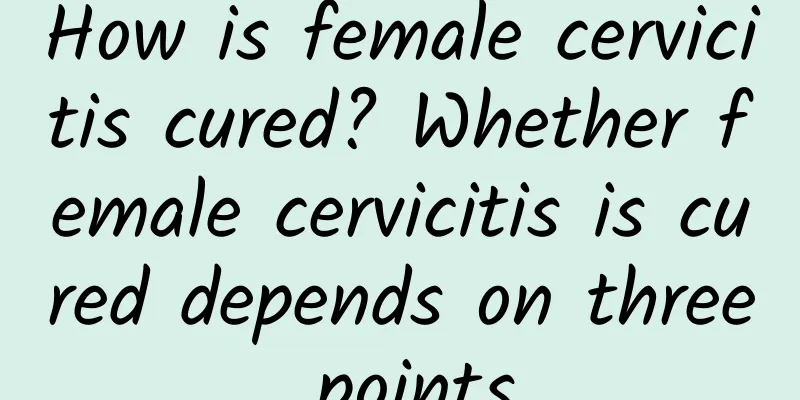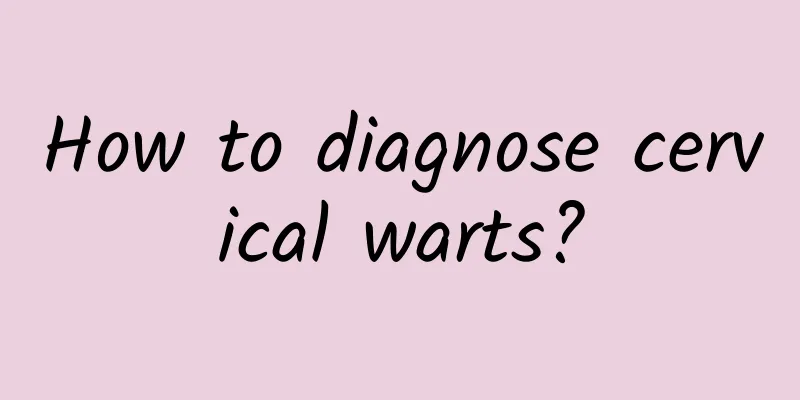How is female cervicitis cured? Whether female cervicitis is cured depends on three points

|
Cervicitis is a gynecological disease. Once the symptoms are found, treatment should be carried out immediately and never ignored. Because it is all subacute cervicitis at the beginning, it is very easy to treat. If the treatment is delayed, it will become chronic cervicitis, which takes a long time to treat and is easy to relapse. Patients with chronic cervicitis should be treated under the guidance of a doctor and can stop treatment only after being cured, so as to avoid recurrence of symptoms. Cervicitis is a gynecological inflammation. In daily life, many female friends suffer from this disease. It can be divided into acute and chronic. So, patients want to know how to deal with chronic cervicitis? If you blindly stop treating the disease, it is likely to recur. So let's take a look at this issue below, hoping to help you. 1. It is not difficult to see whether chronic cervicitis can be cured through gynecological examination. The clinical symptoms of cervicitis are increased female secretions, mucus suppuration, and mixed blood. The irritation of female secretions can cause vulvar itching and burning sensation, usually accompanied by low back pain and lower abdominal distension and pain, and may also cause symptoms such as intermenstrual bleeding and bleeding during sexual intercourse. In addition, there are often urinary and reproductive system symptoms, such as frequent urination, urinary retention, and painful urination. Some patients also experience pain during sexual intercourse and may have a slight fever. The complete absence of these symptoms indicates that cervicitis is under control. 2. Treatment of chronic cervicitis. The purpose of treatment is to find out the pathogens, and then take drugs as the main treatment, oral antibiotics or intravenous drip. For simple gonorrhea, large doses and single doses are used. Common drugs include third-generation cephalosporins and penicillin. In the treatment of chlamydia, there are tetracycline and erythromycin. 3. Chronic cervicitis is caused by untreated or incompletely treated acute cervicitis. The main pathogens are Staphylococcus, Streptococcus, Escherichia coli and Pseudomonas aeruginosa. The pathogens invade the cervix after childbirth, miscarriage or surgery. In short, cervicitis needs to be treated actively to avoid recurrence of symptoms caused by incomplete treatment. How to cure chronic cervicitis? From the above article, we know that patients with cervicitis should take medication under the guidance of a doctor. Whether they are cured or not can only be confirmed through examination. They should follow the doctor's advice and have regular follow-up visits. Treatment can be stopped only when cervicitis is cured. Blindly stopping medication will cause symptoms to recur, and further treatment will increase the difficulty of treatment. In addition, patients should also pay attention to their diet and avoid eating spicy and irritating foods. |
>>: How should women prevent cervicitis? The 6 most effective treatments for female cervicitis
Recommend
Does intermittent fasting reduce your basal metabolic rate? Research: It does not affect the basal metabolism and can help you lose 3.5 kg per month on average
According to many scientific arguments, there is ...
What are the symptoms of pelvic peritonitis?
Pelvic peritonitis is a disease that is very harm...
Does it mean that I can't get pregnant if I have Bartholinitis?
Does Bartholinitis affect pregnancy? Bartholiniti...
Pathological changes of endometrium in patients with anovulatory functional uterine bleeding
Anovulatory functional uterine bleeding refers to...
Experts tell you common ways to prevent ectopic pregnancy
Many young women are prone to ectopic pregnancy i...
Six common causes of uterine adnexitis
Uterine adnexitis is a type of adnexitis with a h...
How to prevent menstrual irregularities in teenagers
How to prevent menstrual irregularities in teenag...
How to regulate irregular menstruation due to blood deficiency? Daily care methods for irregular menstruation in women
There are many women around me who suffer from in...
Several common early symptoms of acute cervicitis
Acute cervicitis is a gynecological disease with ...
How many days is the best time for abortion?
The best time for abortion is generally between 3...
Patients with bacterial vaginosis should pay attention to symptoms in time
Bacterial vaginitis is a type of female disease. ...
What should I do if I feel itchy down there? It needs to be treated promptly and effectively
If you have severe itching down there, you should...
Detailed introduction to pelvic peritonitis
Pelvic peritonitis mainly refers to inflammation ...
What should I do if I have abnormal menstruation after taking birth control pills?
What should I do if I have abnormal menstruation ...
What should you pay attention to when you are pregnant with uterine fibroids? Risks of pregnancy with uterine fibroids
What should you pay attention to when you are pre...









